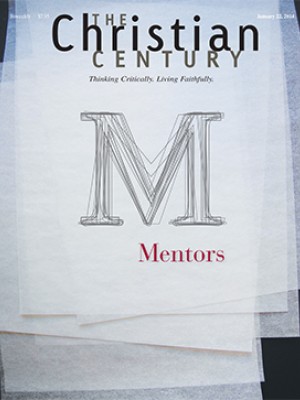Sunday, January 26, 2014: Isaiah 9:1-4
"The people who walked in darkness have seen a great light.” Everyone who has ever sat through a performance of the Messiah knows what’s next: “For unto us a child is born . . .” Handel’s exuberant chorus is probably playing in your mind right now: “Wonderful Counselor, Mighty God, Everlasting Father, Prince of Peace . . .” Isaiah’s royal birth announcement, bright with possibility and expectation, is the centerpiece of the Old Testament lection for Christmas Eve. So it seems strange that the lectionary chooses to reprise it four weeks downstream from Christmas during the January doldrums. Stranger still, the reprise is aborted: we get only the introduction of the theme without its resolution in the announcement of the birth it is meant to herald.
The language of Isaiah 9:1–4 is elusive. It starts in prose, but most translations convert to poetry in verse two, following the editors of most Hebrew texts. There is imagery of despair—gloom, darkness and deep darkness—before the passage begins its turn toward the light. There are place names, mostly lost in the mists of history—Zebulon, Naphtali, “the way of the sea” and “Galilee of the nations”—places of contempt that may yet cherish the hope of recovery. There are the oblique references to vassalage and servitude: the bar across the shoulders, the rod of the oppressor. And if you push on one verse further than the lection, there is the detritus of war: “the boot of the tramping warrior,” “the garment rolled in blood.” Reading these words is like arising in the morning after a violent storm; you look out the window at a yard where turbulent and chaotic forces wreaked havoc during the night. You feel relieved and grateful to have survived, yet somehow drained.
Read our latest issue or browse back issues.
Scholars say the historical context of these verses is the aftermath of the Aramaean-Israelite war. In the mid-730s BCE, a coalition of forces from Aram (Syria) and the northern Israelite kingdom invaded Judah, bent on tearing King Ahaz from his throne and replacing him with a puppet king. The invading forces crossed into the Transjordan. The plan was to form a united wall of resistance to the advance of the Assyrian army, which was moving steadily south and west on its way to the Mediterranean and ultimately to Egypt. If the coalition could secure Judah in its rear, it could fight a single-front war against the mightier invader and perhaps preserve its political identity. But the Assyrians arrived early, and the coalition was caught with its northern frontier unprotected. Aram was crushed, Israel pacified, and Judah relieved and grateful to have survived.
So much for the geopolitics. But as anyone who has ever seen a war zone knows, geopolitics never tells the whole story of war. The real story is written in the rubble of ruined homes and desecrated sanctuaries, looted stores and hopeless survivors. The real story is the story of lingering anguish, the story of those who wake to a silent morning after a night of terror, when relief begins slowly coagulating into despair.
Into this congealing despair the prophet speaks his word of hope: “There will be no gloom for those who were in anguish . . . The people who walked in darkness have seen a great light.”
I wonder whether there is a basic similarity between our position in late January and that of the survivors of the Aramaean invasion. I don’t mean to suggest that we comfortable Westerners suffer the same deprivations as did those Judaeans—that would be to insult war’s victims all over again. But perhaps something of the survivor’s despair may creep over us as a cold winter darkens and the Christmas decorations go back into the attic, as we confront the fact that once again the birth of Christ has not appreciably improved the landscape of our reality.
Emily Dickinson’s poem “After great pain, a formal feeling comes—” was inspired by Good Friday, but it seems somehow appropriate to our post-Epiphany slog through Ordinary Time. Dickinson reflects on the strange frozenness that we experience after moments of highest passion:
After great pain, a formal feeling comes—
The Nerves sit ceremonious, like Tombs—
And in the poem’s last verse:
This is the Hour of Lead—
Remembered, if outlived,
As Freezing persons, recollect the Snow—
First—Chill—then Stupor—then the letting go—
Into our situation, our “hour of lead,” the prophet speaks his reminder that great light illumines only what is in darkness. Hope has its greatest meaning when it comes to those on the point of letting go and losing hope altogether. Maybe that’s why the lectionary reminds us of Christmas in the dreariness of January. It is a way of saying that hope is an alternate reality that lives beneath despair and is never quite vanquished by it.
The more Christmases and Epiphanies I observe, the more I’m convinced that we live, individually and ecclesiastically, frozen on the edge between darkness and dawn, restrained by despair but reaching out for hope. We live on the strength of a promise not yet realized. The abiding sameness of the world never permits us to forget the darkness in which we live, even if only a month after the lights and music of Christmastide. But neither does it have the power to douse the hope that pools around the manger or sparkles in the angels’ song. The hope lives on, even in the hour of lead.





